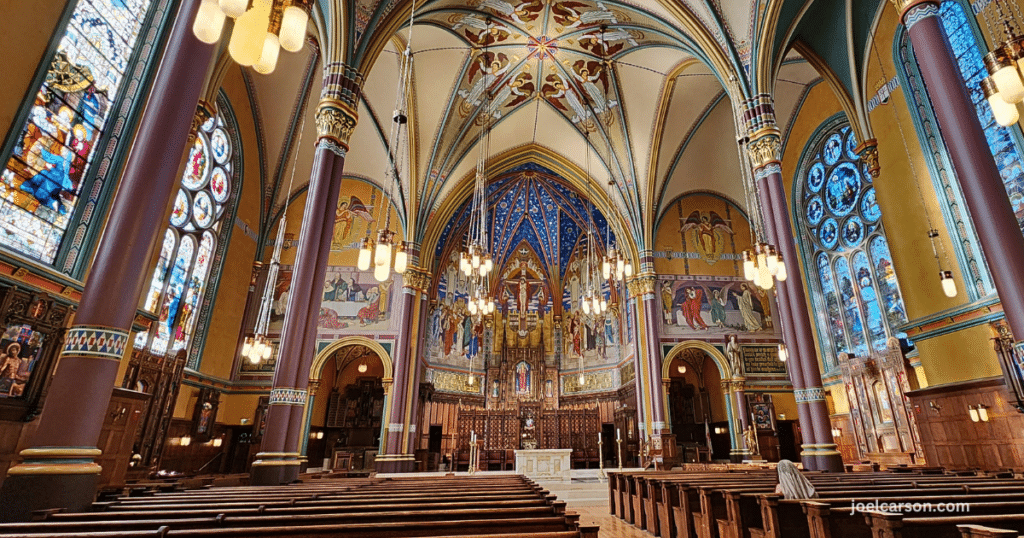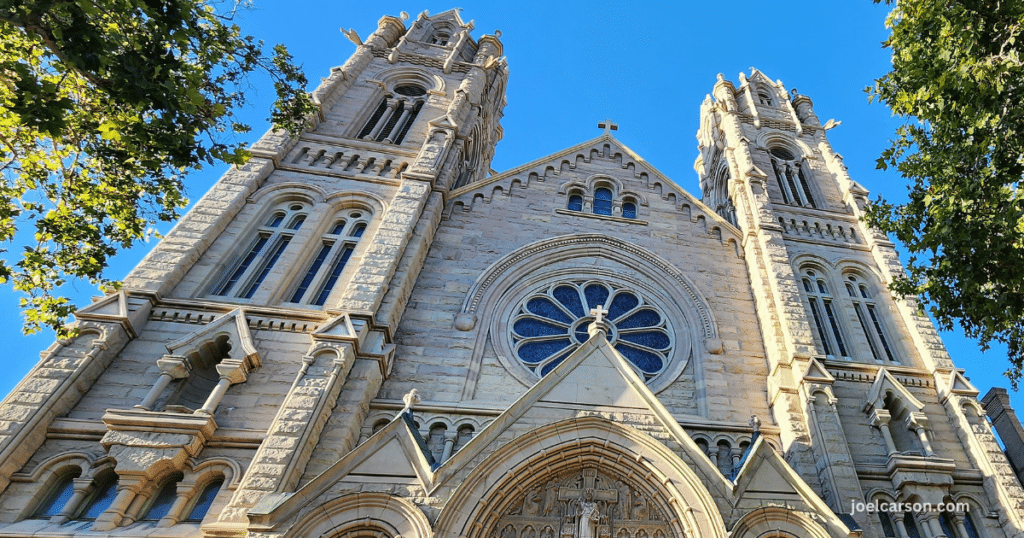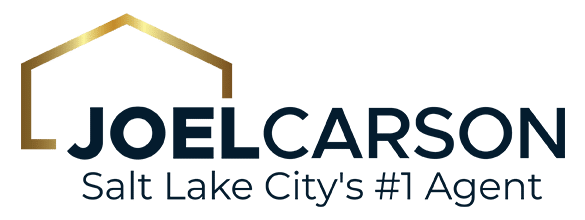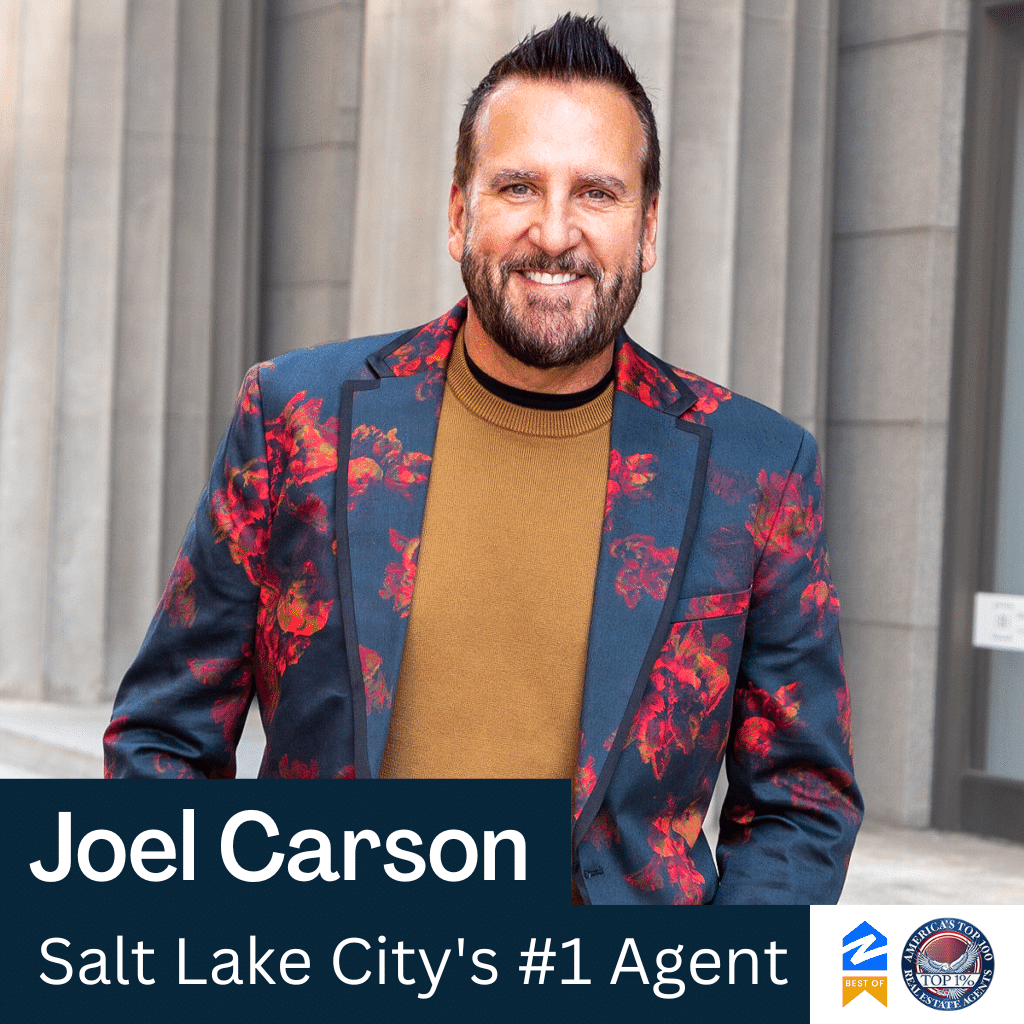
The Cathedral of the Madeleine in Salt Lake City is rich with brilliant colors, intricate designs – painted, carved, and in stained glass – and a peaceful, welcoming ambiance.
Cathedral of the Madeleine offers peace, refuge
If you’re new to Salt Lake City, the historic Cathedral of the Madeleine can seem a little imposing at first. Gargoyles perched on rooftops guard the skyline surrounding this sacred place. The allure of intricately carved stone is (alone) enough to chance getting closer. The gargoyles and decorative grotesques are mythical creatures that grace most period Gothic architecture. The delicious physical details are deeply steeped in symbolism and mystery.
The Cathedral of the Madeleine was completed in 1909 by the Roman Catholic Church. Today it is the Mother Church of the Diocese of Salt Lake City. It is the only cathedral in the U.S. under the patronage of St. Mary Magdalene. The public is welcome to tour this exquisite example of Gothic Revival style. The structure is a work of art and a labor of love maintained for more than a century; but you know, It is the sense of peace and refuge that washes over some upon entry that’s almost impossible to replicate. It is warm and welcoming every day of the week.
Whether you visit to experience the masterful art that makes up this place, or you are looking for a quiet spiritual retreat, you will find it here regardless of your religious beliefs or affiliation.
The Cathedral is open seven days a week, 7 a.m. to 9 p.m. There is no need to arrange a private tour. Everyone is welcome.
Just so you know, there is no sweeter sound than the Cathedral bells (unless it is the sole-stirring children’s choir on an Easter Sunday).

Where is the Cathedral of the Madeleine?
The Cathedral of the Madeleine is located at 331 S Temple (see the map below). The first Mormon pioneers arrived in the valley in 1847. By the late 1800s, South Temple had become a main east-to-west thoroughfare in the heart of Salt Lake City. The Catholic cathedral was built in a place of prominence and is surrounded by grand homes, institutions, and commercial buildings. The immediate community is The Avenues, and it is one of the City’s most popular neighborhoods.
The University/Foothills neighborhood is to the east and Capitol Hill is slightly north/northwest. The Central City is dotted with eclectic shops, ethnic eateries, and entertainment.
The historic Salt Lake City Downtown features a warmth, unlike any other. While modern progress has changed the cityscape dramatically through the decades, Salt Lake has a stronghold on the past. Timeless architectural treasures are meticulously preserved and they tie the past and future together seamlessly.
Gems like the Cathedral of the Madeleine draw people to the historic city year after year.

What is the history of the Cathedral?
The Cathedral of the Madeleine was completed in 1909 by the Roman Catholic Church. The elaborate building is well worth a special trip to explore. The Gothic Revival architecture and Romanesque Revival architecture were designed by Carl M. Neuhausen and Bernard O. Mecklenburg.
Construction began on the cathedral in 1900 under the direction of Right Reverent Lawrence Scanlan who served there from 1843 to 1915. It took nine years to complete. The lot on which it was built was purchased in 1890 for $35,000 (my how times have changed). Construction costs equaled about $344,000.
Although the building remains largely the same as it did in the early 20th Century, it did undergo the previously mentioned renovation in 1975 and another in 1980. Reverend William K. Weigand oversaw a major in 1991 through 1993. Every aspect of the interior was restored and renovated for $9.7 million. The work was done by Beyer Blinder Belle of New York.
10 features that make the cathedral structure unique
- Gothic Revival style: The cathedral is a prime example of Gothic Revival architecture, characterized by pointed arches, ribbed vaults, and flying buttresses. This style gives the Cathedral of the Madeleine a timeless and majestic appearance.
- Twin spires: The cathedral is crowned with twin spires that add a touch of grace. The spires are prominent in Gothic architecture. They contribute to the cathedral’s iconic silhouette.
- Rose Window: A large rose window. This circular stained glass window is intricately designed with radiating tracery and vibrant colors, serving as a focal point and symbolizing spiritual enlightenment.
- Carved stone details: The exterior of the cathedral is adorned with finely carved stone details, including intricate tracery, decorative motifs, and sculptures. These details showcase the craftsmanship of the artisans involved in the construction.
- Gargoyles and grotesques: The cathedral features decorative gargoyles and grotesques, which are sculpted mythical creatures often found in Gothic architecture. These figures add a touch of mystery and symbolism to the building.
- Vaulted ceilings: The interior of the cathedral boasts impressive vaulted ceilings with ribbed patterns, creating a sense of height and space. The vaulting is structurally significant and contributes to the overall aesthetic appeal.
- Chapels and side altars: The cathedral includes various chapels and side altars, each with its own unique design and religious significance. These smaller spaces within the cathedral offer a more intimate setting for worship and reflection.
- Balconies and galleries: Balconies and galleries are incorporated into the interior, providing additional seating and enhancing the overall spatial experience. These features contribute to the sense of grandeur within the cathedral.
- Central nave and aisles: The layout of the cathedral includes a central nave flanked by aisles, a characteristic arrangement in Gothic cathedrals. The repetition of arches and columns creates a rhythm that adds to the visual appeal. The rich, deep colors used inside the cathedral are mesmerizing.
- Sacred art and statuary: The cathedral houses a collection of sacred art, including statues and religious iconography. These artistic elements contribute to the spiritual atmosphere of the space and reflect the Catholic traditions embraced by the cathedral.
What is a tympanum?

The tympanum at the entrance of the Cathedral of the Madeleine in Salt Lake City is a significant architectural feature. A tympanum is a semi-circular or triangular space above the main entrance. The area is often used for religious sculptures or artwork. The tympanum serves as a visual focal point for worshippers and visitors entering the cathedral. Its religious symbolism and narrative contribute to the spiritual atmosphere and sacred experience within the sacred space.
Francis Aretz is credited with the design of the tympanum over the main entrance. It took seven years to build. Aretz is from Pittsburgh, Penn. The actual pieces of the tympanum were shipped to Salt Lake City in pieces in 1917, according to the cathedral’s website at utcotm.org.
“ … the tympanum features the figure of Christ as High Priest, flanked by an angel on each side; and the Twelve Apostles [are] standing and six kneeling, each with his appropriate symbol. The four great Doctors of the Church, Saints Jerome, Ambrose, Gregory, and Augustine appear in the upper half of the work. The four evangelists, Saints Matthew, Mark, Luke, and John appear surrounding the arms of the central cross.”
The Cathedral of the Madeleine Website utcotm.org
“ … the tympanum features the figure of Christ as High Priest, flanked by an angel on each side; and the Twelve Apostles [are] standing and six kneeling, each with his appropriate symbol. The four great Doctors of the Church, Saints Jerome, Ambrose, Gregory, and Augustine appear in the upper half of the work. The four evangelists, Saints Matthew, Mark, Luke, and John appear surrounding the arms of the central cross.” ~ The Cathedral of the Madeleine website utcotm.org.
Exquisite Gothic interior detailed and inspiring
Right Reverend Joseph S. Glass, who became Bishop of Salt Lake in 1915, oversaw the design of the building’s gothic interior. Glass recruited the help of John Theodor Comes. He was a celebrated American architect. The Comes interior is said to have been inspired by the Spanish Gothic of the late Middle Ages. The interior project began in 1917.
The interior features thrilling murals and dramatic polychrome. Stained-glass windows let colored sun rays streak into the building. The paint, glass, and most other elements of the interior were severely damaged over time by pollution, traffic, and normal elements of wear and tear. That was the reason for a major restoration and remodel in the early 1990s.
This building is one of many located in Salt Lake City that whisper stories of the city’s past while paving the way for the future.







